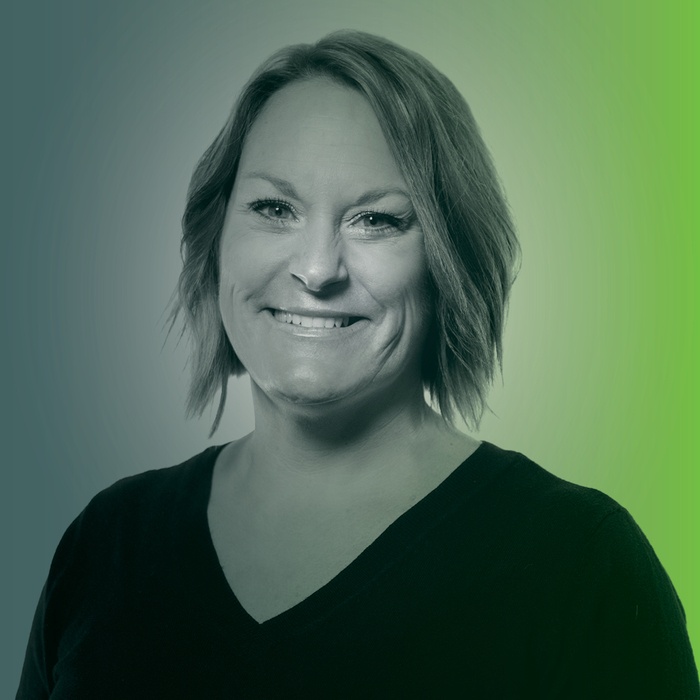What is your position with Ellipsis?
Chief executive officer.

How long have you worked there?
I’ve worked with this organization for 20 years in total — in two different stints. The majority of my time was spent with Youth Homes of Mid-America before the organization merged with Youth Emergency Services & Shelter to form Ellipsis in 2021.
Have you had any other roles/jobs during your tenure with Ellipsis?
I started as youth care worker in our girls group home in 1996. I also worked as an in-home family-centered counselor, a cottage coordinator, a residential program director, a quality and compliance director and the associate executive director of Youth Homes of Mid-America.
What drew you to work at Ellipsis?
I thought I wanted to be a high school teacher, but my student teaching experience left me longing for the personal interaction and relationship development that couldn’t happen in that setting and structure. I started looking for jobs working with teenagers and fell in love with the philosophy and approach of Youth Homes of Mid-America at the time. I tried leaving once, but I couldn’t stay away.
Can you recall a moment (during your career with Ellipsis) when you felt like you were in exactly the right place, doing exactly what you should be doing? What was that like?
I’m ridiculously lucky in that I’ve had tons of these moments. There have definitely been specific experiences with kids in residential programs and with families in their homes; moments in court when I could advocate for the support kids and families needed; supervision and training opportunities with staff where the proverbial lightbulb came on; and votes in board meetings where I was confident the right big decisions were being made.
Most recently though, it was when I was preparing my remarks for our first Ellipsis Celebration event. There have been many opportunities to reflect on the merger and what we’ve accomplished, but none in such summation. As I was writing about the impact the merger has already had on kids, families, staff and our community in the last year, it really hit me. We’ve absolutely done the right thing. I don’t take credit for all the work by any means, but being able to be the one to share that message with all the people who made it happen felt like EXACTLY what I was supposed to be doing.
What are some of the more challenging aspects of this job?
The most challenging thing we face is having the will to do more without the resources to do it. We have amazing staff who are willing to go miles to help our kids and families and often we can’t do what could or should be done because we don’t have the budget, the right systems in place, enough support or just the right people for the right work. There is so much more to be done, and we will continue to advocate for what is needed to make it happen. We greatly thank our volunteers and supporters for their help, which doesn’t go unnoticed!
What are some of the rewarding aspects of the job?
Undoubtedly, it’s when former kids reach out to let us know they’re doing well or even when they reach back out to us for help. For me, though, it’s also incredibly rewarding to see our staff succeed. Sometimes that looks like them going back to school, sometimes it’s a promotion or recognition from our provider peers. Often, it’s simply hearing their stories of even the smallest wins with kids: When they describe an interaction that goes surprisingly well or a decrease in a negative coping skill they’re working on. Those small wins and the confidence they build in our staff are a wonderful reminder of why and how we do what we do.
Why is it important to have residential programs in communities, and qualified people working in them?
In a better world where our vision becomes a reality, places like Ellipsis will cease to exist. Today, all of our services and programs, including residential, are key pieces to the fabric of a healthy community where we attempt to help people to find the success they envision. Sometimes breaking dysfunctional cycles and creating space for treatment to work requires kids living in out-of-home settings. For that treatment to work, we need to hire, train and support the best and the brightest to teach and support our youth. The kids in our programs will be living, working and raising families alongside all of us in our communities, and we want to set them up to do that well.
What is a misconception people may have about mental health treatment? How do you dispel that?
Many people believe mental health treatment is what “other” people need. It’s maybe never been more clear that mental health needs are more prevalent and pervasive than most of us have understood. “Treatment” seems scary and overwhelming, but it’s often as simple as getting an objective perspective on the things that are keeping us from being our best selves and living our best lives. The more we talk about this, the better it gets. The more we share our successes and our failures, the easier it is for all of us to ask for help when we need it. Open dialogue is key.
Since the brand introduction last year, what makes you most proud?
It’s never difficult to identify what makes me most proud — it’s always our direct care staff, the people doing the most difficult jobs in our agency day in and day out. We’ve asked them to put up with a lot over the last year and the change fatigue is definitely real, but their resolve to continue to do their best for kids and families has not wavered. They live our values in their work every day — they are compassionate, tenacious, real and consistent and I could not be more proud of them.
If there’s anything else you’d like to add about your role, please feel free to do so!
I feel incredibly lucky to be part of the Ellipsis team.
